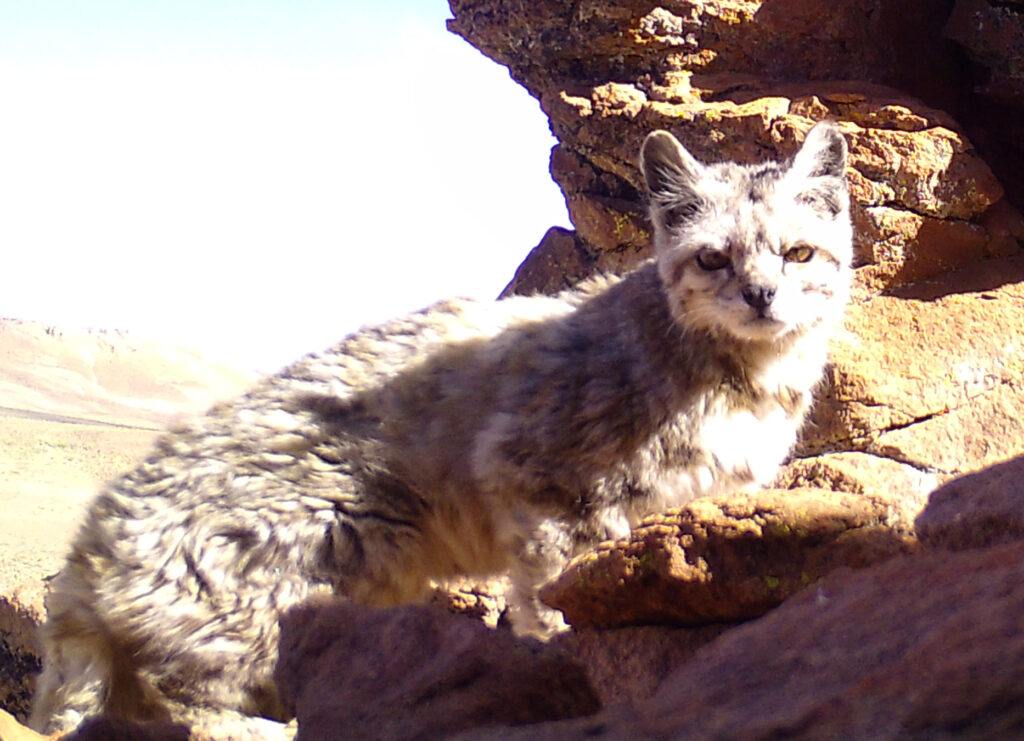The wind whipped through Cintia Tellaeche’s hair as she crouched to reach the camera trap fastened to a post. She retrieved the SD card, hoping it contained evidence of Andean cats near Lagunillas del Farallón, a rural village in northwestern Argentina. That same wind reached Constanza Napolitano in neighboring Chile as she trekked toward another camera trap set up in the Parque Andino Juncal (PAJ) protected area with the same hope in her heart. These intrepid women are coordinators for the Andean Cat Alliance (AGA), and after months of crossed fingers, their hope would become reality.
The Andean cat is one of the rarest small wild cats in the world, with less than 1,400 individuals still roaming the Andes Mountains. Small, scattered populations within vast habitats mean that some researchers spend entire careers never seeing one in person. Camera traps are a primary method of observing these cats, but an entire year can pass with only a handful of photos of this elusive species captured. This makes every new Andean cat photo very relevant. So, when Cintia’s camera trap produced a photo of a cat staring right at her, it proved that Andean cats were living near Lagunillas del Farallón. Similarly, the camera trap that Constanza checked had produced the first photo of an Andean cat ever recorded in PAJ.
Two new sightings in two new locations in the same year is monumental for AGA, and was only possible by enlisting Andean communities in their conservation efforts. The Lagunillas del Farallón community is involved in AGA’s CATCrafts program, which preserves cat habitat by providing local women artisans with sustainable economic opportunities. It was these villagers who first told Cintia they had seen Andean cats nearby, prompting her to install camera traps and involve the locals in citizen science, creating a deeper connection between them and wildlife. Constanza coordinates AGA’s “In the Field 24/7” program in PAJ and relies on the deep local knowledge of PAJ’s park rangers to identify the best spots to set up cameras.
With these new sightings, AGA can fill in knowledge gaps about Andean cat distribution. They are also more likely to find scat samples for genetic analysis, which helps AGA evaluate the impact of parasites and diseases spread from domestic animals to Andean cats. Gathering photos and samples are non-invasive ways to examine species health and create population estimates, which take years to complete. New sightings also help AGA develop a range map to advocate for protected land corridors. They believe it is very likely that more cats live in PAJ and Lagunillas del Farallón, with the latter having the most suitable habitat for them.
Cintia and Constanza have had their hope of locating Andean cats reinvigorated by these latest findings. They credit these valuable milestones to support from local people, whose knowledge of landscapes is fundamental to AGA’s strategies. By empowering locals to contribute to conservation and take pride in the wildlife around them, AGA is ensuring that everyone has an important role in finding and protecting Andean cats.





4 Comments